When to harvest onions while gardening?
We consume onions for over 4,000 years. Onions are a popular cool-season food that you may produce from seeds, seedlings, or transplants. In the fall and winter, onions may be a mainstay in the kitchen because of their low-maintenance nature.
Onions are remarkably simple to grow, but understanding how to harvest and preserve onions is vital if you want to get the most out of this culinary staple. Knowing when to harvest onions might help you get the most flavor and quality from your harvest. Let’s look at the onion organic gardening tips:
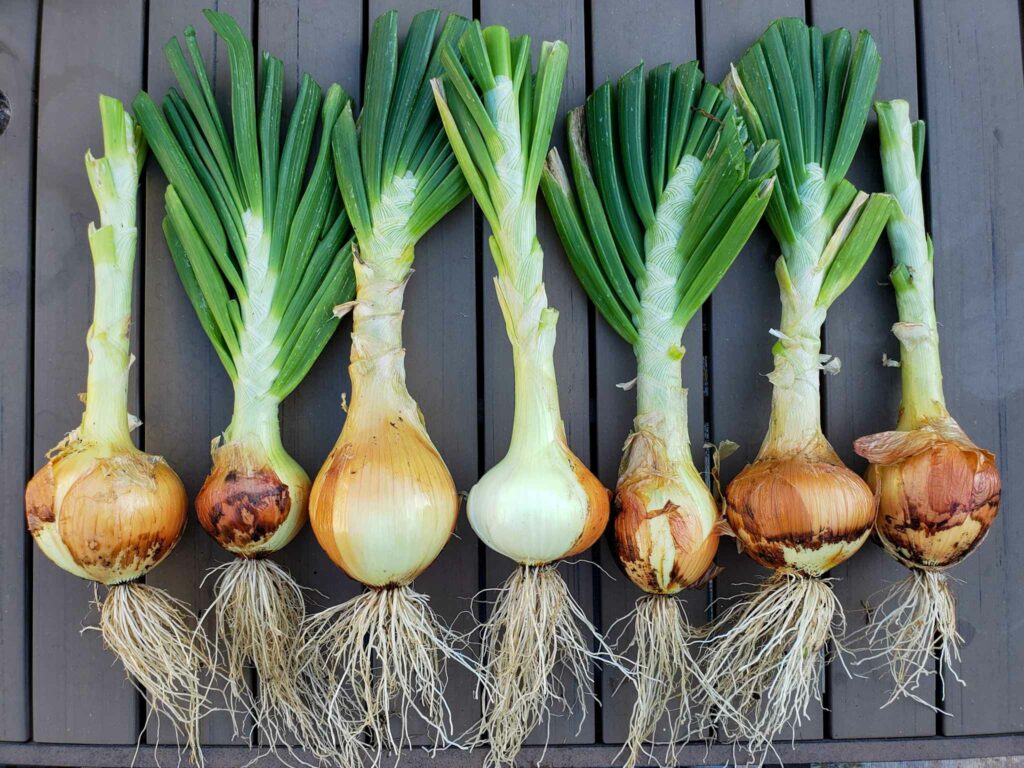
Harvesting Green Onions from Soil
Green onions are bunching onions that one may use in a number of recipes. They lack the large bulbous appearance of typical onions. They are collected while they are young and have a considerably milder flavor than storage onions.
Green shoots should be plucked when they reach 6-7 inches in height. If you wait any longer, the plant will become stronger and more difficult to pluck. Your crop is not dead yet if you missed the best harvesting season for green onions and they have bolted and gone to seed with the formation of flower stalks.
Pull out the onion bulbs as soon as possible and utilize the onions from garden organics soil. These onions will not keep well, but you may use them right away.

When to harvest onions?
Aside from correct planting, knowing when to harvest for the best flavor is essential. You should pluck green onion tops when they reach 6 inches in height (15 cm). The longer you wait to harvest the green tips, the stronger they become.
It is appropriate to harvest bulb onions when the onion tips naturally fall over and brown. This is usually 100 to 120 days after planting, depending on the variety. You should harvest onions early in the morning when temperatures are not too high.
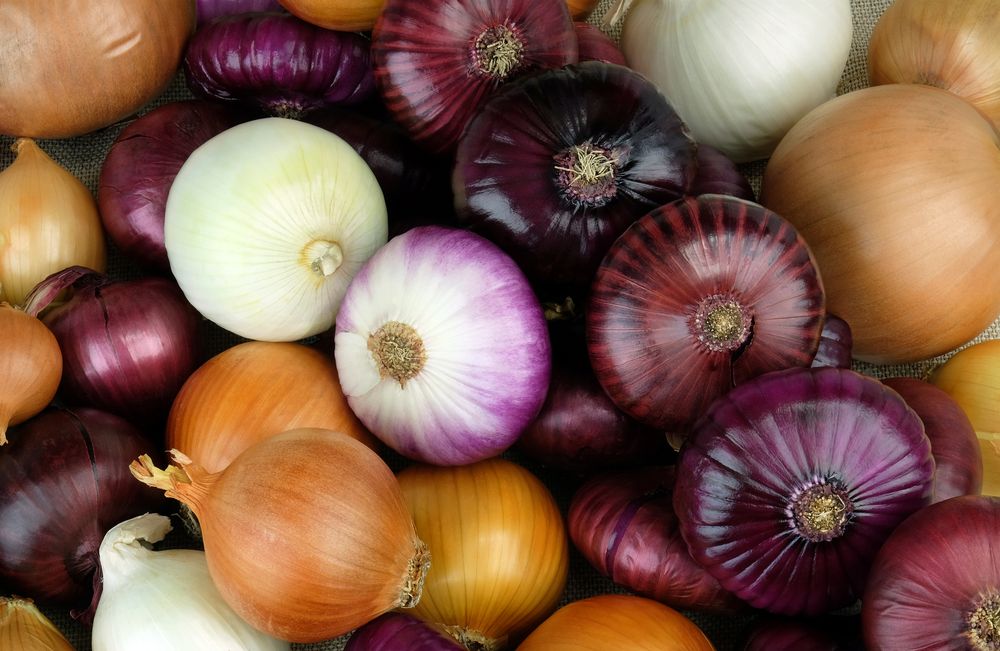
Drying and storing Onion Bulbs
After harvesting, you must store onion bulbs. Before onions can be preserved, they must first be dried. Spread the onions out on a clean and dry surface in a well-ventilated area, such as a garage or a shed, to dry.
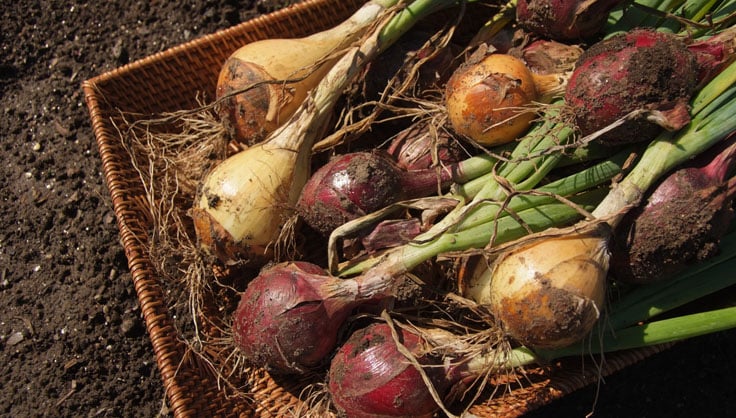
How do you know when onions are ready to harvest
Harvesting onions from gardens is easy and applies to all types of onions. When the bulbs start to plump up in July, start selecting individual onions as needed. In late summer or early fall, the leaves on your onion plants will begin to droop over. This occurs at the “neck” of the onion and signifies that the plant has done growing and is ready for storage. You should pluck soon onions after, signs your onions are ready for harvest:
Soft neck
The transfer of carbohydrates from the leaves to the rings is complete when the area immediately above the neck where the leaves meet the bulb begins to feel mushy, suggesting the last cell division inside the rings. Water less often at this stage.
Tops are falling apart.
Even if not all of the tops are down, when some do, this symbolizes a 100% soft neck. You can pluck and consume the onions if you intend to eat them right away. There is adequate skin development and green tips at this phase to avoid sunscald while drying.
Last Leaf
Examine all the leaves, giving special attention to the one that has just appeared. The leaf sheaths form and dry from the oldest to the youngest leaf. If you take the onions from the soil before the last leaf is dry, rot may develop during storage.
It is best to remove your onions first thing in the morning, before the heat and harsh sunlight become unpleasant.
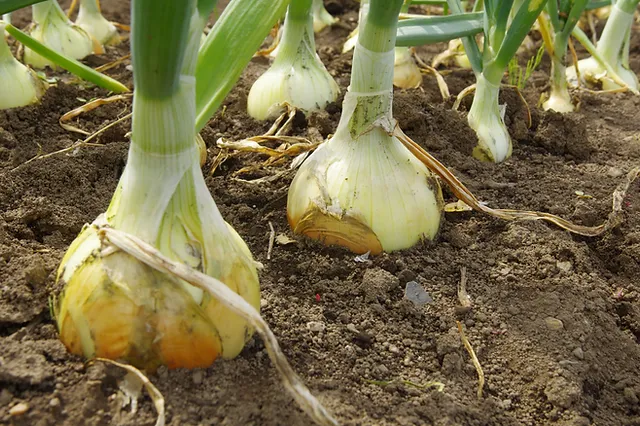
How to dry onions in the sun?
Simply stretch your onion gardening raised beds out on a level surface in a location that receives full sun exposure to dry them out in the sun. Allow the onions to dry for a few days, or until the onion roots and plant itself are dried and brown, or the outer skin is crisp. If there is a forecast for rain during the drying time, just cover them or bring them indoors until the sun returns.
When your onions are dry, brown, and crisp, cut off the tops about an inch from the bulb and snip off the dried roots. Continue to cure the onion bulbs by laying them loosely on a table or counter in a warm, well-ventilated place, out of direct sunshine, for one hour.
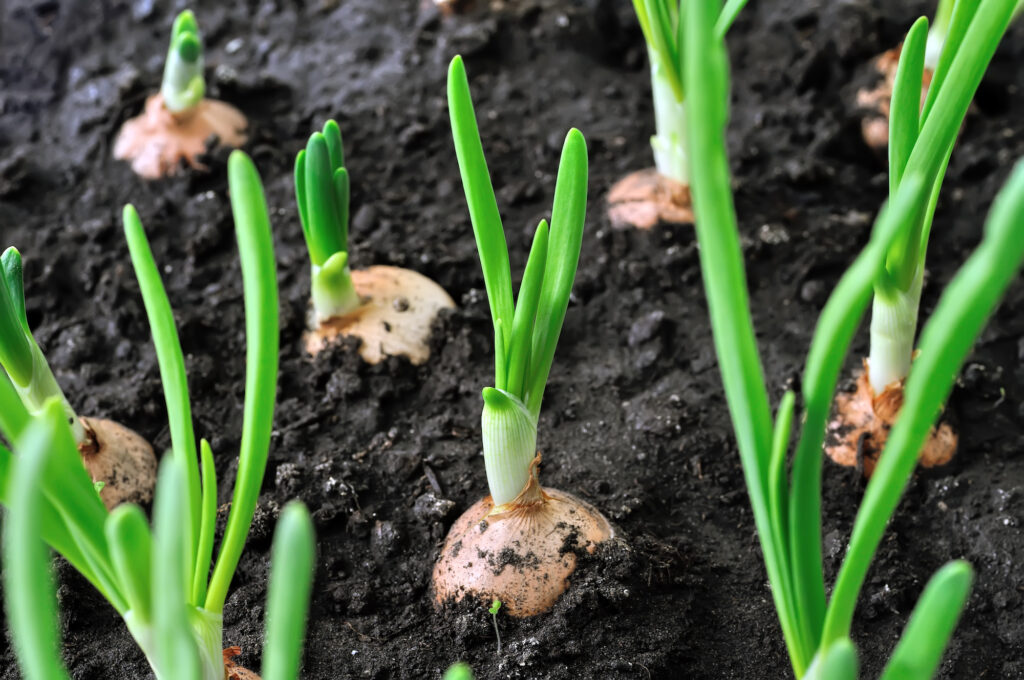
Drying onions easily-
After harvesting, dry or cure the onions in a warm, dry, well-ventilated area, such as a shed or garage. Arrange the onions in a single layer on a clean, dry surface. Allow the onions to cure for two to three weeks, or until the tops and necks are totally dry and the outer bulb scales rustle.
Once the onions have been totally cured, cut the tops off about an inch above the bulbs. As they are topped, remove any onions that show signs of rotting.
How long does it take for curing onions?
People frequently cure commercial onions at extremely high temperatures for six weeks before being gradually cooled to refrigerator levels. However, naturally curing onions for a month in a warm, dry atmosphere works just as well.
Freshly harvested onions benefit from early drying, but not in direct sunshine, which can cause uneven drying.
Of course, one must cure not all onions. Gardeners who grow mostly short-day onions in warm climates just need to dry the onions for a few days before trimming and storing them in the refrigerator.

When to harvest onion flowering from garden?
If you detect your onion plants producing flowering stalks too early in the season, act quickly to protect your onion harvest before the flavor is ruined.
As soon as you notice your onion plants bolting, cut off the blossoming heads. This will halt the growing process that is causing the bulb to split. Then, pluck the bulbs of any bolted plants and eat the onions as soon as workable.
Remember, you’ll want your onion plants to live as long as possible now that you have removed them from the soil. This necessitates a lengthy drying and curing process. If the weather is dry and no frost is there, the onions can be gently removed from the soil and placed in the garden for a day or two. If the weather is moist or chilly, move the onions to a protected position right once.
